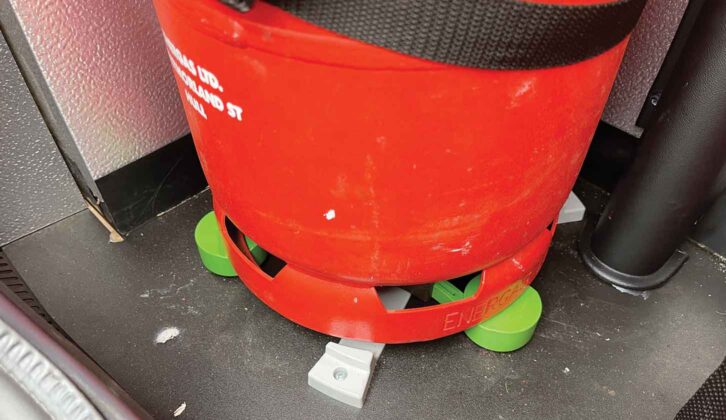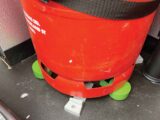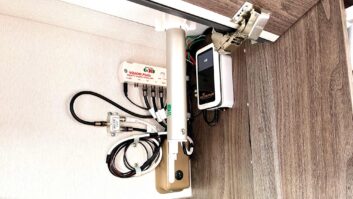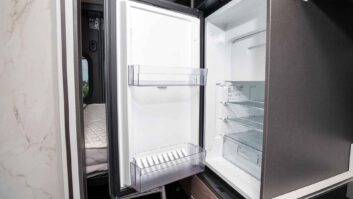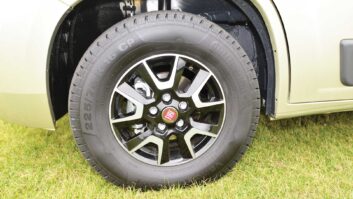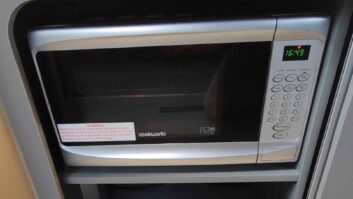For several years, I have successfully used a Truma LevelControl gas monitoring unit, but for a couple of reasons, I was keen to try out another similar device, manufactured by German firm GOK, specialists in products for use with LPG, the GOK Senso4s Plus.
For those who haven’t come across them, the LevelControl attaches magnetically to the underside of the cylinder, measures the contents in the bottle and then transmits the data to your phone via Bluetooth. The device fits within the bottom rim of the bottle and is suitable for all sizes of steel containers.
Unfortunately, while the LevelControl has worked perfectly, the same can’t be said for this particular operator! Although Truma supplies a magnetic warning label, which you attach to the side of the bottle to remind you the LevelControl has been fitted, that only works if the operator remembers to fix it to the bottle.
Guess who’s changed cylinders a couple of times (swapping an empty one for a full one), only to get home and remember that the old bottle still has the LevelControl attached?
- We take a look at how you can go gasless in your motorhome.
Practical Motorhome is supported by its audience. When you purchase through links on our site, we may earn an affiliate commission. Learn more
Standing on its own feet
The first thing to note with the Senso4s Plus is that gas bottles sit on its three extending feet, rather than it being attached to the underside of the cylinder. You extend each of the feet from the centre block, so each one fits underneath the bottom rim of the bottle.
GOK says the device is suitable for gas bottles with a rim diameter of between 18cm and 32cm, so it should be fine for most of those in use in the UK. It will support up to 45kg total weight (bottle plus gas), with a maximum LPG weight of 16kg. A typical UK 6kg propane bottle, when full, will weigh in at approximately 13-14kg.
There is also a GOK Senso Basic model, but this is designed for static use, in home barbecues or permanently sited vehicles. The Senso4s Plus is the one for a motorhome, as it deals with movement (but won’t transmit data while moving).
So, how do you use this digital gauge? It’s really straightforward. The first step is to download the Senso4s Plus app (suitable for both Android and iOS devices) to your phone. You will then need to insert three AAA batteries (not supplied) into the battery compartment in the Senso4s base unit, and then ensure you have your phone’s Bluetooth turned on.
Connect the app to the Senso4s Plus, ensuring that the devices are no more than 0.5m apart for the initial set-up. Once connected, simply follow the instructions on the set-up wizard.
You will be prompted to enter the tare (empty) weight of the gas bottle, which will be marked on the cylinder itself or a plate attached to it.
With the two identical bottles I had, I noticed there were slight variations in the tare weights (one was 7.36kg and the other, 7.45kg). As the weights you can enter are only to one decimal place, this won’t be 100% accurate. Then enter the filling weight, in our case 6kg.
Fitting the GOK Senso4s Plus to the gas bottle
With the bottle in place in the gas locker (see our guide to fitting a splash-proof gas locker vent if water is splashing in), you then need to extend the feet equally from the base unit, so that the bottle sits in the grooves on those feet.
I found this the fiddliest part, because our ’van has mountings to keep the bottles in place inside the locker. The feet attach magnetically to the bottle, but getting the device in the
right place so that it would fit in the locker and not foul any other attachments took a bit of trial and error.
We got there in the end, then the gas bottle needs to be secured in the normal manner.
You can now read the measured values in the app. According to GOK, the display shows the current filling level to an accuracy of +/-1%.
Each time that you change a gas bottle, you’ll have to check the weight values that are entered, especially bearing in mind possible variations in those cylinder tare weights.
Not only does the app display how full the gas bottle is, but based on usage, it will also predict how long it should last you. Owing to the short time that I’ve had the unit, I haven’t been able to test the latter facility as yet, but I plan to do so in the near future.
As for accuracy, when I connected a full 6kg propane bottle to the device, the display screen indicated that it was 99.5% full. The Truma LevelControl said 100% full, so it’s clear that both are reasonably accurate. It also looks as though the GOK Senso4s Plus functions well within its claimed limits, too.
Although fitting the Senso4s Plus in our ’van was initially a bit fiddly, a huge plus is that when it’s time to change the empty bottle for a full one, when you lift out the old cylinder, there’s very little chance of leaving the unit attached – you can’t miss those bright green feet! I look forward to testing the device over an extended period.
A step by step guide to fitting a GOK Senso4s Plus
1. The GOK Senso4s Plus in the box.
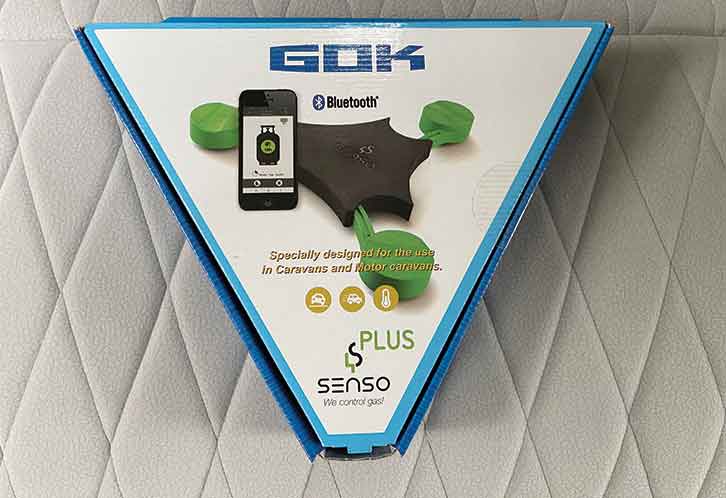
2. The GOK Senso4s Plus has three feet.
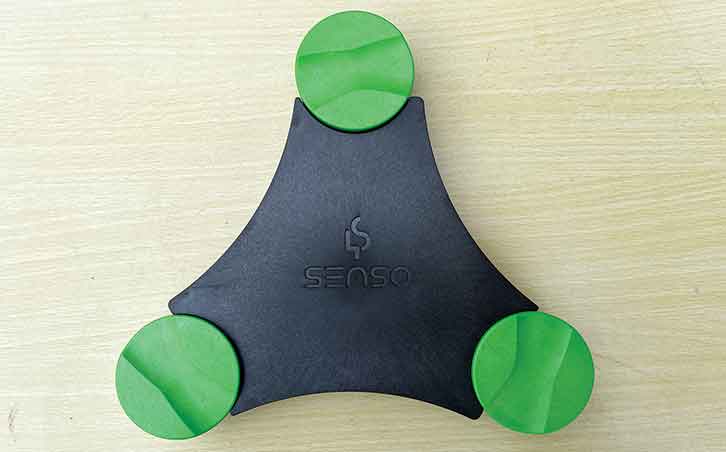
3. The feet extended by varying amounts.
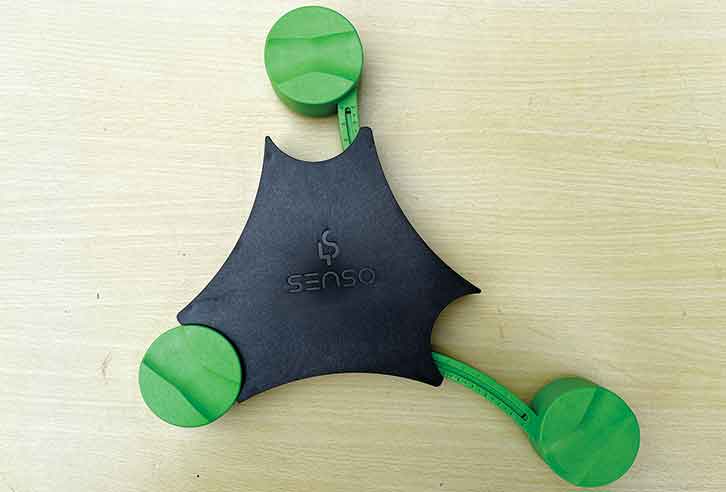
4. The GOK Senso4s Plus set correctly for a 6kg propane bottle.
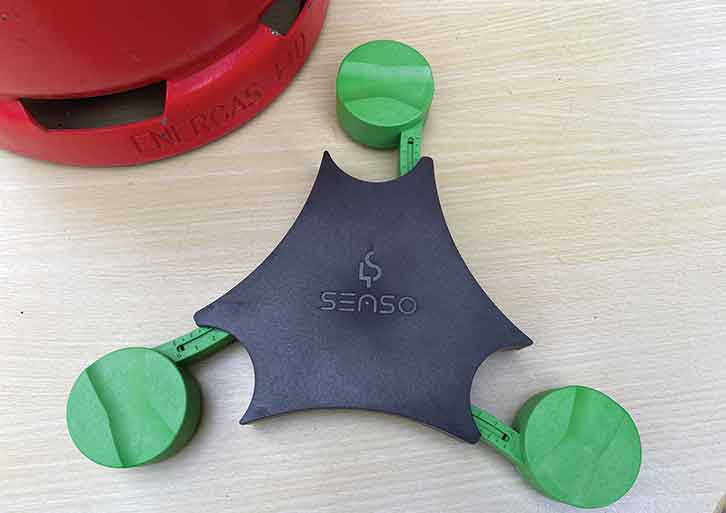
5. Follow the simple instructions on the app to set up.
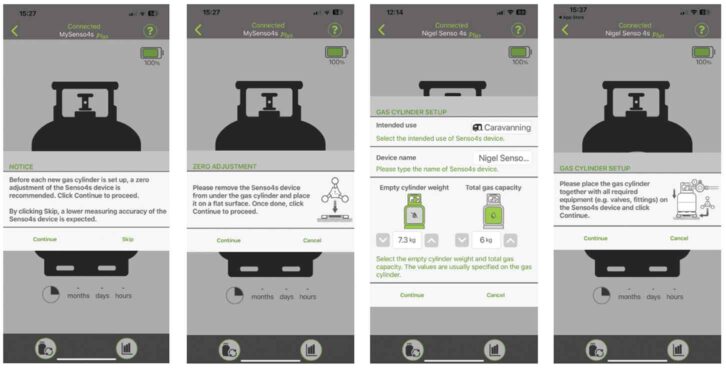
6. Bottle mounting in Nigel’s ’van, with the GOK Senso4s Plus attached underneath.
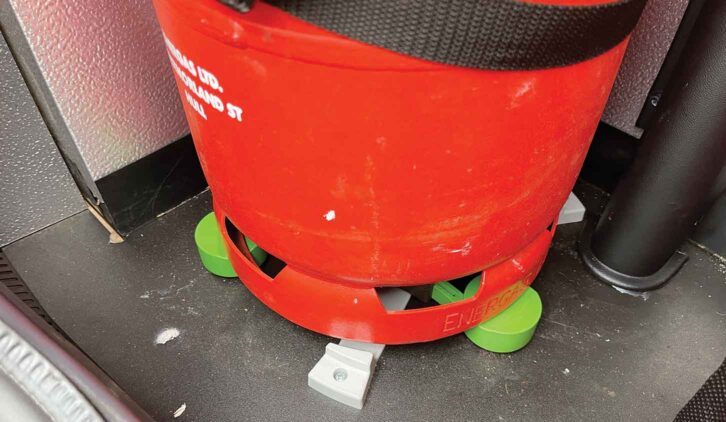
7. The GOK Senso4s Plus app showed the bottle as 99.5% full while the Truma LevelControl showed the same cylinder as being 100% full.
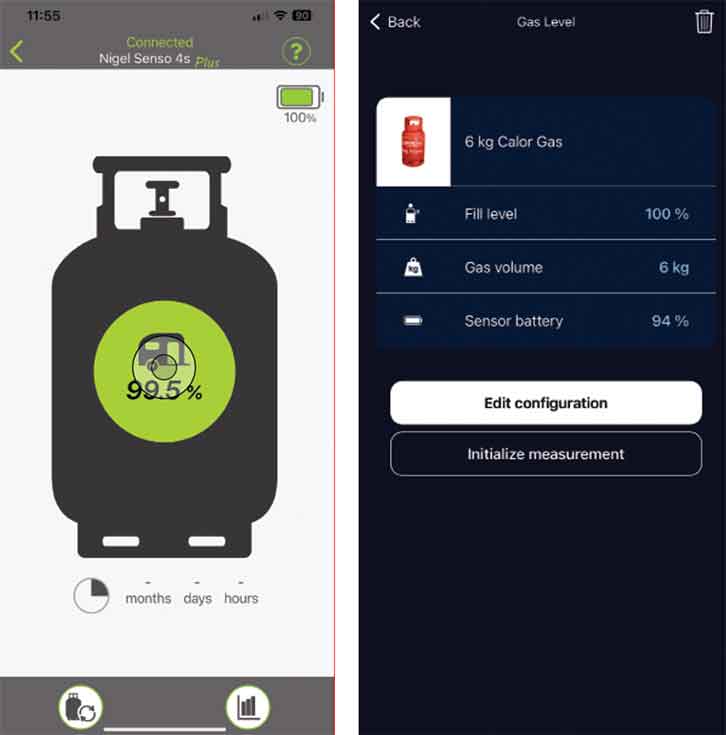
8. Identical bottles, but with different tare (empty) weights.
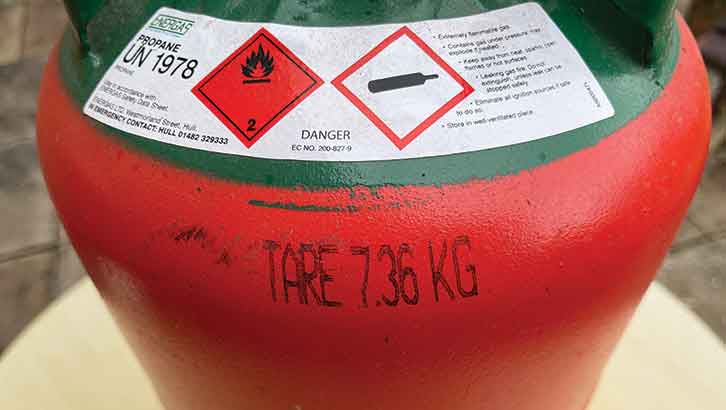
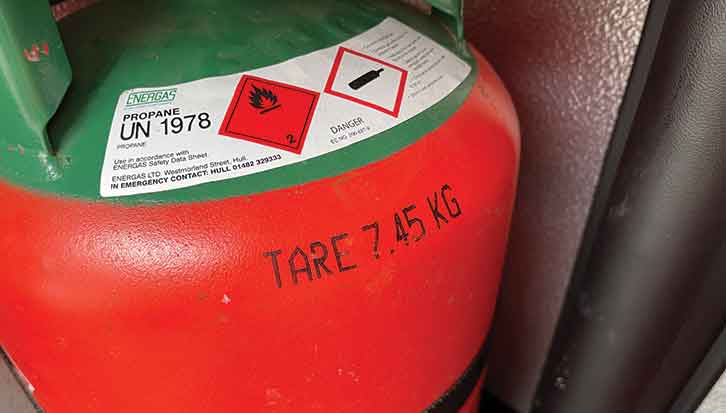
Looking for some more DIY for your ‘van? Then check these out
- If you have an older ‘van, knowing how to fit an awning light with photocell can make a big difference.
- Are you looking for a faster way to power up your gadgets on tour? Our guide to how to install QC 3.0 USB fast chargers and an 8-way fuse panel talks you through the process.
- We explain how to fit an Alde Outside Temperature Sensor.
Future Publishing Limited, the publisher of Practical Motorhome, provides the information in this article in good faith and makes no representation as to its completeness or accuracy. Individuals carrying out the instructions do so at their own risk and must exercise their independent judgement in determining the appropriateness of the advice to their circumstances. Individuals should take appropriate safety precautions and be aware of the risk of electrocution when dealing with electrical products. To the fullest extent permitted by law, neither Future nor its employees or agents shall have any liability in connection with the use of this information. Double check any warranty is not affected before proceeding.
If you’ve enjoyed reading this article, why not get the latest news, reviews and features delivered direct to your door or inbox every month. Take advantage of our brilliant Practical Motorhome magazine SUBSCRIBERS’ OFFER and SIGN UP TO OUR NEWSLETTER for regular weekly updates on all things motorhome related.
